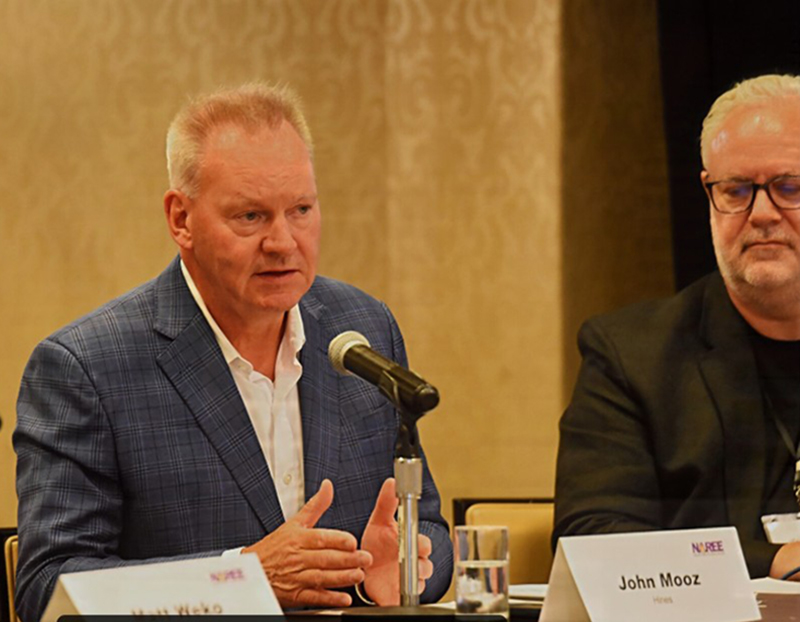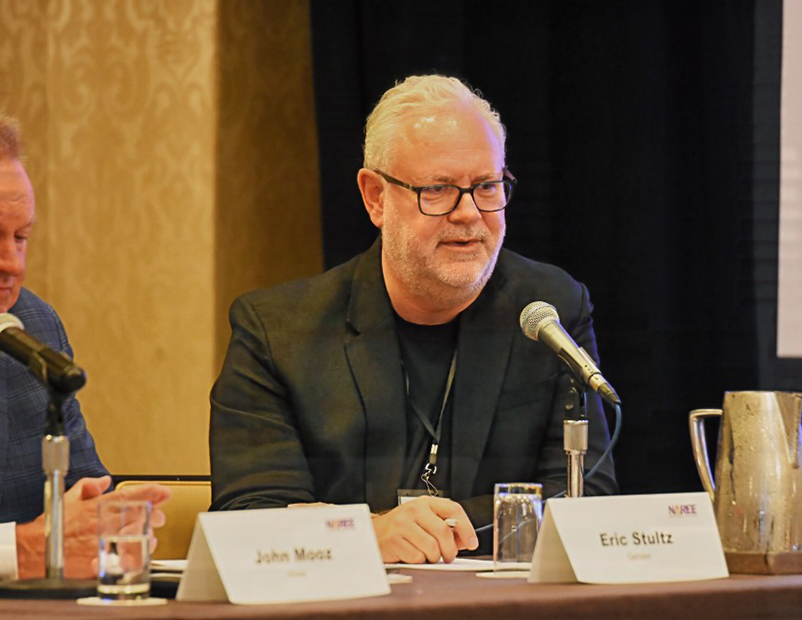NAREE Special Report: What Makes a Sports District a Home Run?
How to ensure franchises, cities and developers all win.

Thirty or forty years ago, stadiums were built on the outskirts of town, surrounded by massive amounts of parking and not a lot of infrastructure. Fast forward to today: Sports franchises, developers and cities are joining together to form mixed-use sports districts that are integrated into the city and intended to be used by the community year-round rather than used only on game days.
“Owners of franchises have gotten very smart to realize that their real estate can have a tremendous impact on their fan base, and obviously, on the valuation of their franchises,” said Matt Weko, president of consumer goods & services at JLL, speaking on a panel about sports districts at the National Association of Real Estate Editors 59th annual real estate journalism conference in New Orleans. The session was moderated by Bisnow’s Maddy McCarty.
At the same time, sports franchises are helping revitalize downtowns and catalyze other business opportunities.
The concept is not brand new. In Los Angeles, LA Live—where the L.A. Lakers, L.A. Kings and L.A. Sparks play at Crypto.com Arena—opened in 2007, while the ballpark district surrounding PETCO Park in San Diego, home of the Padres, opened in 2004, for example. But there is another wave of even grander visions underway, sparked in large part by the tremendous growth of sports teams.
“The valuations of the teams have gone through the roof—the (Dallas) Cowboys are worth $9 billion—so investing in and leveraging that value through a real estate play makes a great deal of sense right now,” said Eric Stultz, studio director & principal for Gensler, which helped design L.A. Live and similar projects, including the redevelopment plan for Houston’s Astrodome.
LIKE THIS CONTENT? Subscribe to the CPE Capital Markets Newsletter
So what goes into making a successful sports district? One essential element is to be as mixed-use as possible.
“There has to be something for everyone and multiple somethings for everyone, and that helps with the community buy-in,” said John Mooz, senior managing director for Hines, which is developing a new mixed-use sports district with a 17-story, 300-room hotel and 60,000 square feet of retail and entertainment space adjacent to Daikin Park, home of the Houston Atros.
Hines will also serve as development manager of a mixed-use development in Omaha, Neb., that includes a new USL soccer stadium for Union Omaha.
The natural components for these projects include performance venues, food & beverage and retail, Stultz said, but housing is also an essential—though “more complicated”—part of the equation. “I think it does help revitalize a district and provide continuous activity because a sporting event is only going on 30 times a year. It doesn’t have enough activity for the rest of the time,” he noted. Residents may not want to be “in” the project but they can still be adjacent.

Developers are also looking to include office in these projects. “I think the office component is second to housing in terms of tricky because it feels like there is a small percentage—maybe 10 or 15 percent—that may want to be in (the) office,” Weko said, “and then it gets into cultural alignment in terms of that type of setting.”
One of Weko’s clients that has taken space in such a district has “leaned into” its surroundings with VIP awards that are football themed. “It’s become part of who they are, but it wouldn’t work for everyone,” he said.
Essentially, these projects must be highly curated and experiential, Mooz said: “If you do that right, more and more, you will see parallels, where people will go there on non-game days.”
Managing expectations
Managing stakeholder expectations is another important part of the sports district creation process.
To allay concerns and garner support, developers must “embrace the larger community objectives” and should engage early in the process with community groups that are already focused on community benefit. And they must set realistic expectations.
“The narrative that comes with the economic impact plan is, ‘They may not pencil out, but they make a lot of sense for the community,'” Weko said.
Time expectations must also be managed, since it can take up to 15 years for the sports district vision to become reality. “These things do take take time,” Stultz said, “and the economics can change quite a bit.”
Technology will also change, and investors have to be willing to invest to keep the project current.
Investors have expectations for success, too, Mooz said: “They are looking for something that not only meets the market but exceeds the market.” They want to create a must-visit experience. “That’s kind of a test,” Mooz said. “Would you want to go there, and would you bring someone who is visiting there? If you can answer both of those things, it’s probably going to be pretty successful.”
Creative financing and branding
Funding can also spur feelings from the community, since these projects cannot be achieved without public investment. Creative solutions can help alleviate the burden on taxpayers, Mooz said.

At a Hines project in Houston near Minute Maid Park, for example, a surcharge has been placed on all future food and beverage sales within a three-mile radius to help finance the project. “You are looking at taxes that don’t exist today,” Mooz said.
Furthermore, sports districts create a lot of branding opportunities, and branding plays a big role in the success of these projects. Hines and Gensler were part of the team that built the Star in Frisco, the 91-acre headquarters and practice facility of the Dallas Cowboys in Frisco, Texas. Within that project, the Cowboys also built a 12,000-seat stadium for high school football. This public amenity helps draw visitors to the restaurants and retail at the Cowboys’ sports district.
“It was really innovative at the time in a way that no one had seen before,” Stultz said. “It was really combining both of those brands—the Friday Night Lights brand and the Dallas Cowboys brand.”







You must be logged in to post a comment.